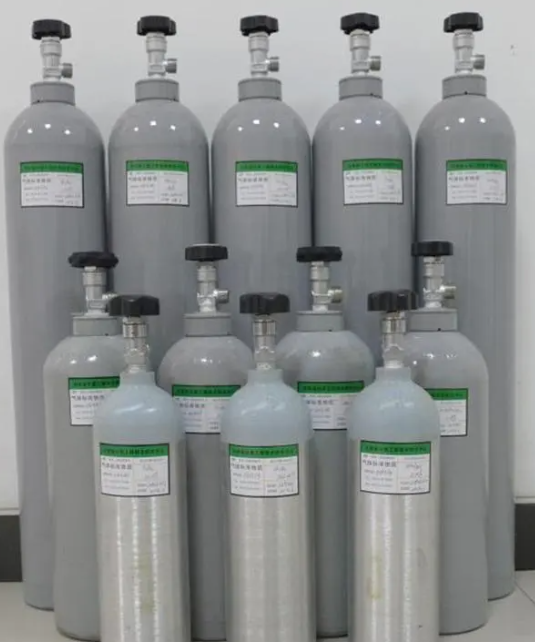Factor-1 raw material
The balanced gas of the standard gas is nitrogen, air, etc. The lower the water content of the balanced gas, the lower the oxygen impurities, and the better the concentration stability of the standard gas component.
Factor-2 pipeline material
It mainly refers to the material of the bottle valve, pressure reduction valve, and pipeline.
Environmental protection standards often contain components with strong activity and strong corrosion. If copper valves and copper pressure decompression valves are used, it will cause adsorption and reaction to the standard gas. Therefore, the bottle valve and pressure decompression valve of stainless steel are needed to ensure stable concentration.
Factor-3 gas cylinder processing
Gas bottle material: Standard gas cylinder is commonly used in aluminum alloy, but aluminum alloy has many materials, the alloy content is different, and the degree of response from the material in the bottle is also different. After testing a variety of aluminum alloys, it was found that the 6061 material can most effectively ensure the stability of the standard gas. Therefore, the gas cylinder is currently equipped with the bond of the gas.
Gas cylinder manufacturing technology: liquid empty uses a pull bottle. This kind of gas cylinder allows the metal to be formed with molds at high temperatures, making the fine lines in the inner wall of the gas cylinder relatively small. Why use this method? This is because if there is a small crack in the inner wall of the gas cylinder, when the gas cylinder is cleaned, the inner wall of the gas cylinder will adsorb water. The use time for standard gas is often as long as half a year to one year. The dry gas in the bottle will definitely balance the moisture in the crack, resulting in the water analysis in the crack reacts with the gas. This also explains that the concentration of some standard gases in the beginning is accurate, but later became inaccurate.
Inner wall of the steel cylinder: Maybe you have heard of the coating bottle. This gas cylinder can effectively separate the contact between the gases and the bottle wall to ensure the stability of the standard gas. After a variety of technologies, liquid air is mainly selected to ensure the stability of the standard gas by passivation of the inner wall of the gas cylinder. Passivation refers to the use of high concentration gas to fill the gas cylinder, such as using high -concentration SO2, and then static to allow the bottle wall to adsorb saturation SO2. concentration. At this time, because the bottle wall has reached a state of adsorption saturation, it will no longer react with the gas.
Factor-4
The residual pressure in the gas cylinder also affects the stability of the concentration of gas. Each bottle of standard gas contains at least two components. According to the law of Dalton’s pressure, different components in the gas cylinder are different. During the use of gas, as the pressure gradually decreases, the pressure of different components will change. The response of some substances is related to stress. When the pressure of each component is different, the movement of a chemical balance reaction will occur, resulting in changes in the component concentration. Therefore, it is recommended to leave 3-5BAR residual pressure per bottle.
Post time: May-06-2022

